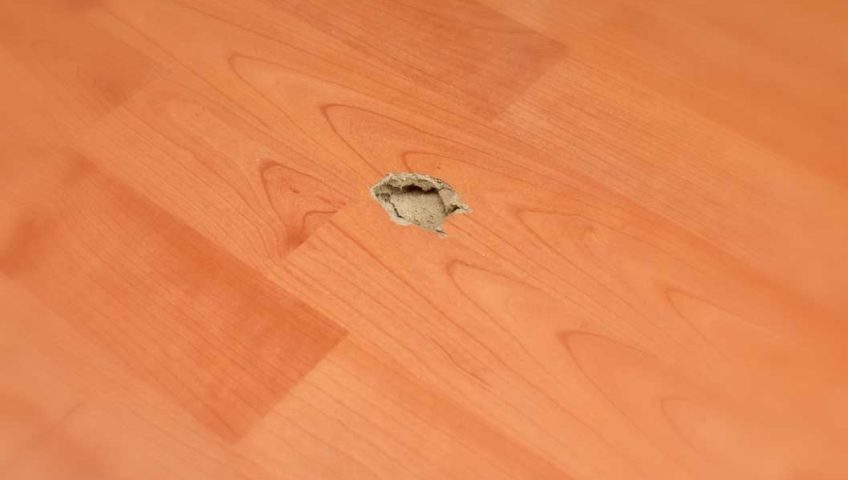Parquet flooring, with its timeless elegance and intricate patterns, has been a popular choice for both commercial and private premises for centuries. However, over time, even the most meticulously maintained floors can show signs of wear and tear. As a commercial builder and renovator, one of the most common questions I encounter is how to repair the floor without replacing the parquet flooring. This article provides a comprehensive guide on restoring your parquet floor to its former glory without the need for complete replacement.
To start, it’s essential to understand the common issues that can damage parquet flooring. These include water damage, scratches, dents, uneven surfaces, and discolouration. By identifying the specific problem affecting your floor, you’ll be better equipped to choose the appropriate property maintenance service and repair method.
1. Addressing Water Damage
Water damage can occur due to spills, leaks, or flooding. If not dealt with promptly, moisture can penetrate the wood, causing it to expand, warp, or even rot. In such cases, a thorough inspection by a property maintenance service is recommended to assess the extent of the damage.
To repair water-damaged parquet flooring, the first step is to dry the area completely. Use dehumidifiers, fans, or heaters to speed up the process. Once the floor is dry, sand the affected area with medium-grit sandpaper, followed by fine-grit sandpaper. This will help to remove any remaining moisture and prepare the surface for refinishing.
Next, apply a wood filler to level out any warped or uneven planks. When the filler is dry, sand the area again with fine-grit sandpaper to create a smooth surface. Finish by applying a matching wood stain and a high-quality polyurethane sealer to protect the floor from future damage.
2. Repairing Scratches and Dents
Scratches and dents are inevitable in high-traffic areas or when heavy furniture is moved across the floor. Fortunately, these imperfections can be fixed without replacing the parquet flooring.
For shallow scratches, use fine steel wool to gently rub the affected area until the scratch is no longer visible. Then, apply a matching wood stain and a thin layer of polyurethane sealer to restore the finish.
For deeper scratches or dents, apply a wood filler that matches the colour of your flooring. Once the filler has dried, sand the area with fine-grit sandpaper to create a smooth surface. Finally, apply a matching wood stain and a polyurethane sealer to complete the repair.
3. Levelling Uneven Surfaces
Uneven surfaces can occur when individual parquet planks or tiles become loose or shift over time. To fix this issue, remove the affected plank or tile by carefully prying it up with a chisel or putty knife. Clean the subfloor beneath the plank and apply a suitable adhesive. Press the plank back into place, ensuring it is level with the surrounding floor. Use a heavy object or clamp to hold the plank in position while the adhesive dries.
4. Restoring Discoloured Parquet Flooring
Sunlight, spills, and general wear and tear can cause parquet flooring to become discoloured over time. To restore the colour of your flooring, begin by sanding the entire floor with medium-grit sandpaper, followed by fine-grit sandpaper. This will remove the old finish and prepare the surface for refinishing.
Next, apply a matching wood stain to the entire floor, taking care to blend the colour evenly. Allow the stain to dry completely before applying a high-quality polyurethane sealer to protect the floor and enhance its appearance.
5. Preventative Maintenance
Once your parquet flooring has been repaired, it’s essential to establish a regular maintenance routine to prolong its lifespan and preserve its beauty. By adhering to these preventative measures, you can minimize the need for future repairs and keep your flooring looking its best for years to come.
a. Cleaning
Regular cleaning is crucial in maintaining the appearance and integrity of your parquet flooring. Sweep or vacuum the floor daily to remove dirt and debris that can scratch the surface. Avoid using harsh chemicals or excessive water, as these can damage the wood. Instead, opt for a damp mop and a cleaning solution specifically designed for parquet floors.
b. Protective Measures
To prevent scratches and dents, place felt pads or furniture sliders under the legs of heavy furniture. Additionally, using rugs or mats in high-traffic areas can help protect your floor from wear and tear.
c. Climate Control
Wood is sensitive to fluctuations in temperature and humidity, which can cause the parquet flooring to expand or contract. Maintain a consistent indoor environment by using air conditioning or heating systems, and consider using a humidifier or dehumidifier to regulate humidity levels.
d. Regular Inspections
Periodically inspect your parquet flooring for signs of damage, such as loose planks, warping, or discolouration. Addressing minor issues promptly can prevent more extensive damage and the need for costly repairs.
e. Refinishing
Over time, the protective coating on your parquet flooring may wear down, making the surface more susceptible to damage. Depending on the level of wear, consider refinishing the floor every 5-10 years to restore its appearance and protect the wood.
By following these steps, it is possible to repair your floor without replacing the parquet flooring, saving you time and money. However, if you’re unsure about the extent of the damage or the appropriate repair method, it’s always best to consult with a professional property maintenance service in Melbourne. Their expertise can help you make the right decision and ensure your parquet floor remains a beautiful and durable feature of your commercial or private premises.

